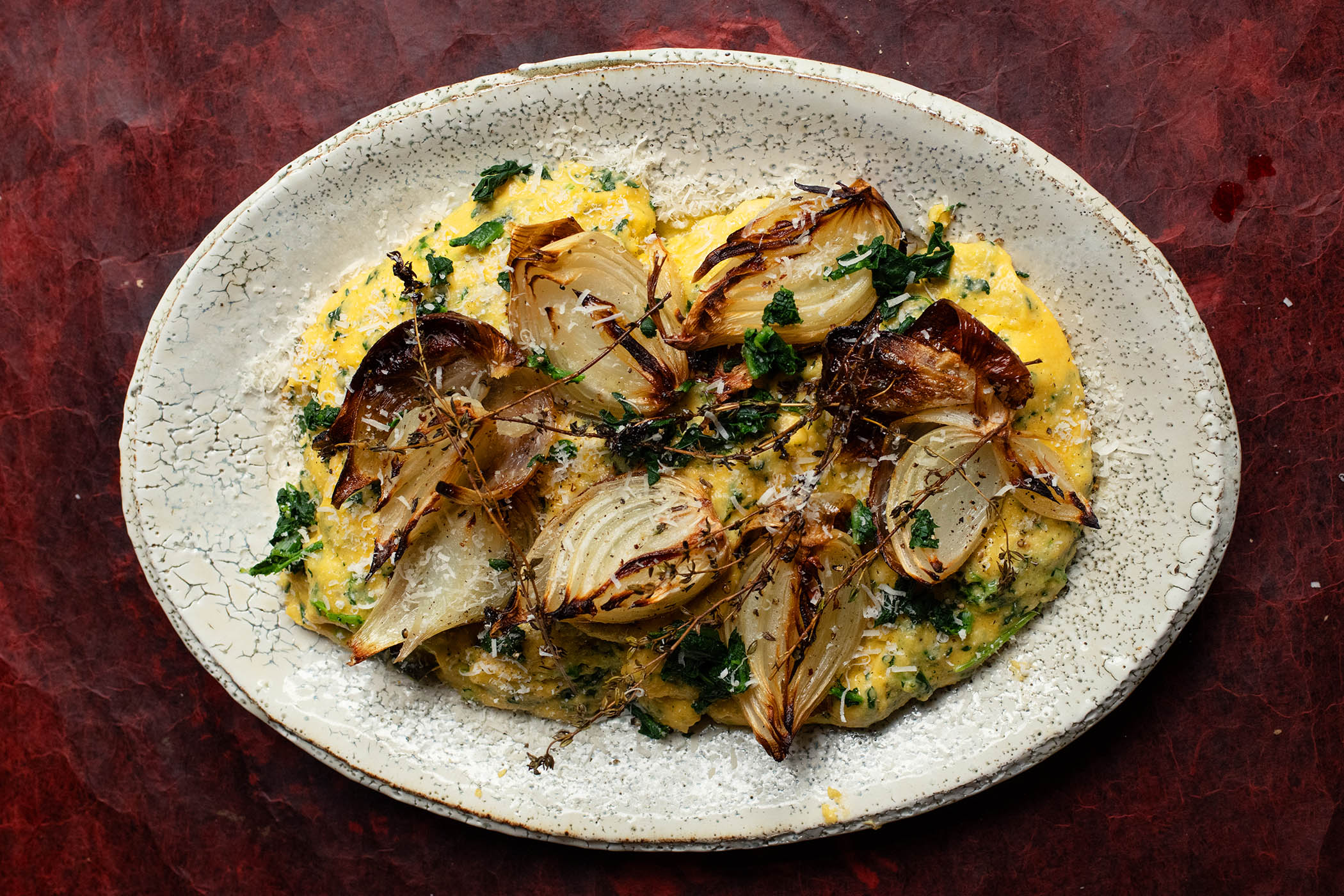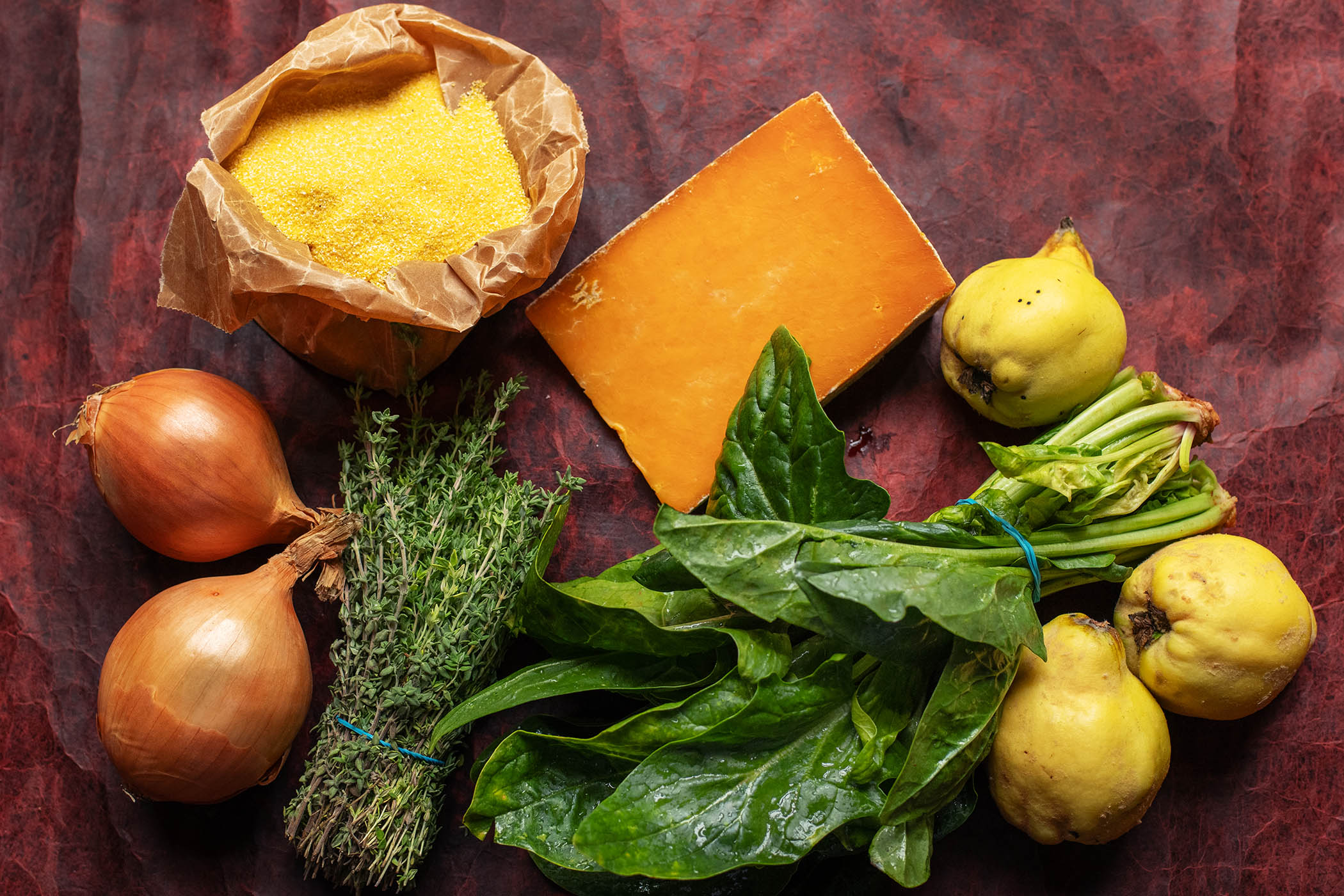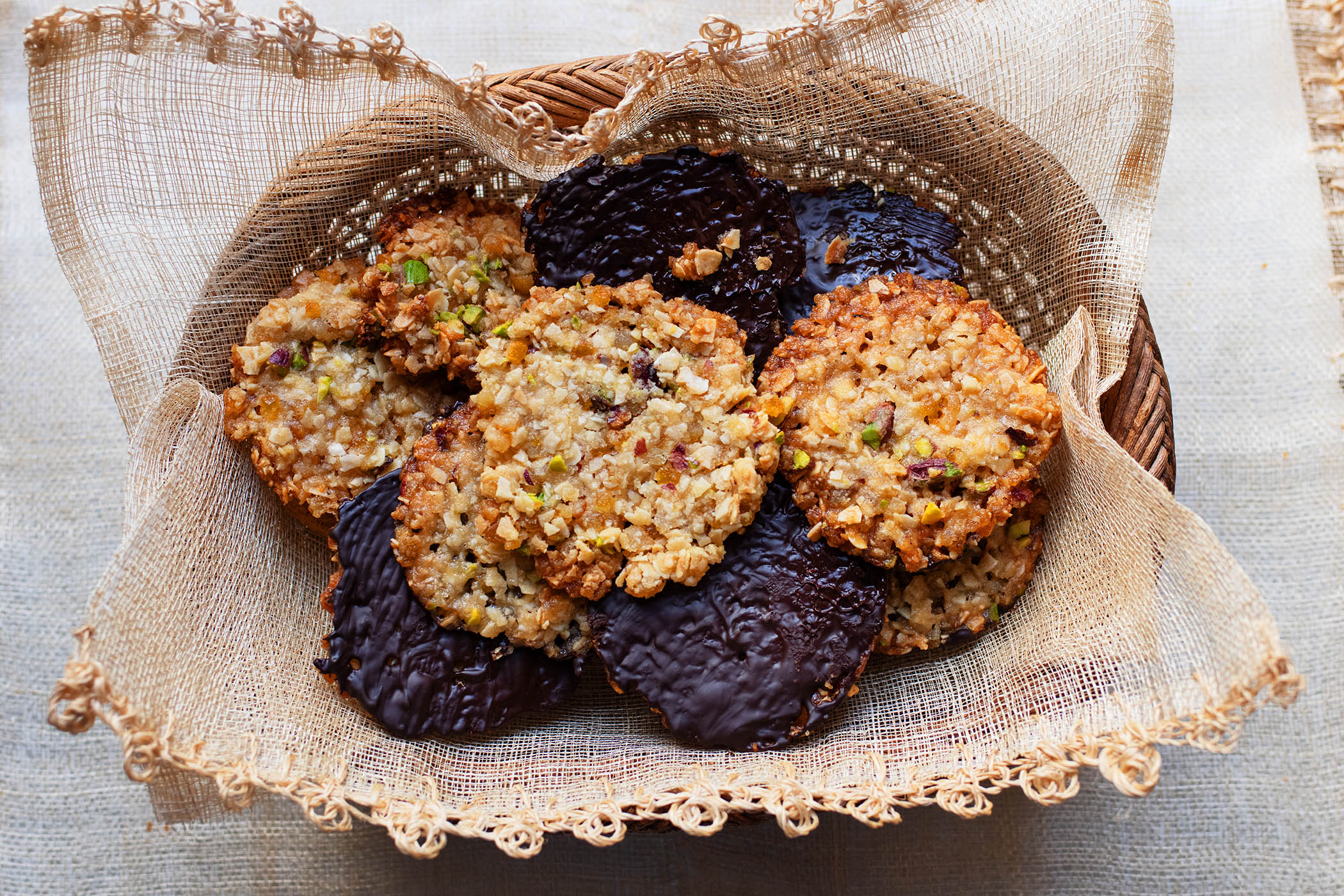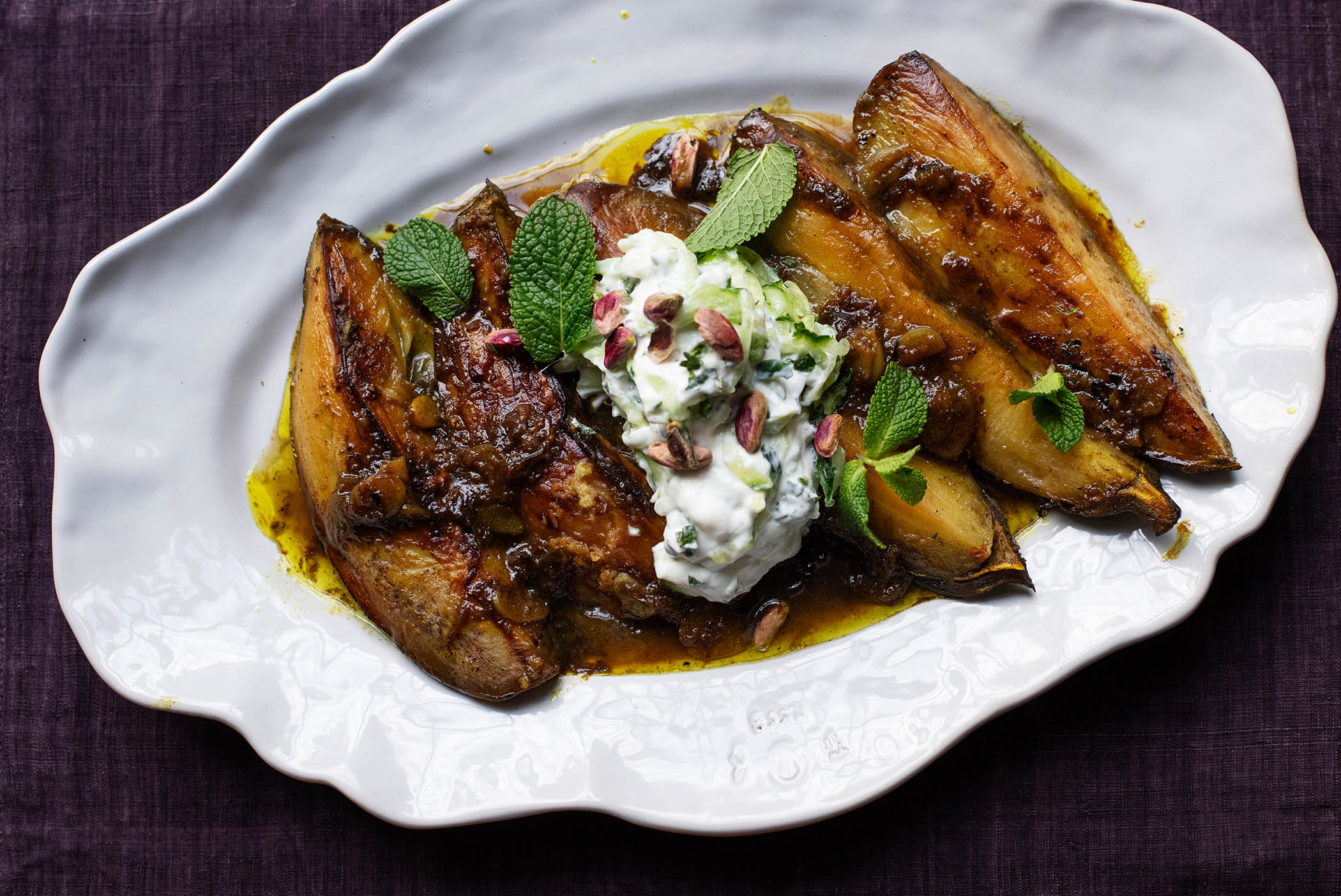If I get the heat level right, my pot of polenta will putter quietly on the stove, sending little puffs of steam up from its creamy yellow depths. Comforting smoke signals to say that supper is on its way. Should I have the heat set too high, then the pan will emit Vesuvius-like splatters of scorching cornmeal porridge over the hob and myself. I have learned to fine-tune my simmering polenta in the same way I have with chicken stock or porridge.
Making a pot of polenta is one of those peaceful kitchen jobs akin to making risotto. The day unwinds with each slow stir of the pot. My early dislike of this cornmeal porridge came from being tight with the seasoning. A generous hand is needed with salt, butter and parmesan. You can embellish this humble supper as you wish, introducing mozzarella or gorgonzola to melt in pools on its surface, or by stirring in a handful of chopped herbs or crushed roasted garlic.
I made a green version this week, adding chopped steamed spinach leaves into the mix. You can never add too much butter, but I included a generous amount of cheese – a Sparkenhoe red leicester – I could just as easily have used a deep flavoured, mature cheddar – in addition to the almost compulsory grated parmesan. The polenta came with roasted onions, cooked until their layers were sweet and translucent, their edges slightly scorched in the heat of the oven and seasoned with thyme.
The polenta that was left over set into a cake and was sliced into wedges and cooked on the griddle the following day. I covered each slice with tomatoes, thickly sliced and trickled with a an emerald dressing of olive oil and basil.
I don’t know why I associate All Hallows with quinces, but I do. A gift of quinces, pale yellow and fuzzy as a peach, arrived this week. I left the beautiful, knobbly fruits in a bowl on the kitchen table for all to admire. Peeled and rubbed with lemon juice to stop them browning, the fruits were stewed in a sugar syrup before being sautéed with butter. We ate the glossy result under a crust of almond crumble.
Related articles:
Later in the week, I brought a bagful of especially large quinces home from the shops, yellow as butter and plump as a pigeon. They were hard to get into – their flesh is like wood – and it was even harder to dig out their cores, needing both a heavy cook’s knife and the tip of the tiny, strong blade I normally use for cutting up cardboard. But the flesh simmered to tenderness in 40 minutes on the hob, their colour changing from white to deepest glowing amber. We ate them with a jug of cream swirled into the warm, fragrant syrup.
This weather brings the soup-maker out in me, including one of chicken stock, miso paste and butterbeans, that’s a quick staple autumn supper. Twice this week I have simmered chicken stock (the real stuff made with a chicken carcass) with thyme, bay leaves and onions, then stirred in a jar of cooked butter beans and a few spoons of miso. The soup is sweetened by cooking the sliced onions to a soft, golden tangle before adding the herbs and stock.
Roast onions and spinach polenta

‘I have learned to fine-tune my simmering polenta’
Serves 4. Ready in 1 hour.
Good polenta – creamy, smooth and buttery – is much about the stirring. Use a wooden spoon and, as you stir, make sure to get right into the corners of the pan, otherwise your polenta will scorch. I usually cover my hand with a cloth once the polenta starts to bubble. If you like your polenta to be particularly creamy, then replace half the milk with double cream.
onions 3, medium
olive oil 50ml
butter 50g
thyme 10 sprigs
For the polenta:
water 500ml
milk 500ml
bay leaves 3
fine polenta 150g
spinach 400g
butter 50g
parmesan 50g
mature cheddar 150g
Set the oven at 200C/gas mark 6. Peel the onions, cut them in half from root to tip, then in half again. Put the onions in a roasting tin, pour over the olive oil, then dot with pieces of the butter. Scatter the thyme sprigs among them.
Roast the onions for about 40-45 minutes, basting once or twice, until they are soft and translucent. If the onions are done before the polenta is ready, they will keep well enough in a low oven.
While the onions are roasting, make the polenta: pour the water and milk into a large, heavy-based pan, drop in the bay leaves and bring to the boil. Salt the water generously, then rain the polenta into the boiling water in a steady stream, stirring continuously.
Take great care at this point, the polenta will bubble and spit like a volcano. Lower the heat to make it behave, continuing to stir regularly so it doesn’t stick.
Wash the spinach leaves, remove any thick stalks and, while they are still wet, put them in a pan over a moderate heat and cover with a lid. Let the leaves steam for a couple of minutes, then turn them over and steam again briefly.
Drain the spinach, dunk it into cold water to arrest the cooking, then squeeze out the water with your hands and set aside.
Cut the butter into small pieces and add to the polenta, stirring regularly. Chop the spinach and stir in, then finely grate and stir in the parmesan. Grate the cheddar cheese and stir in, together with the spinach. Check the seasoning.
Spoon the polenta on to a serving dish, then place the roast onions and pour over any butter from the roasting tin.



